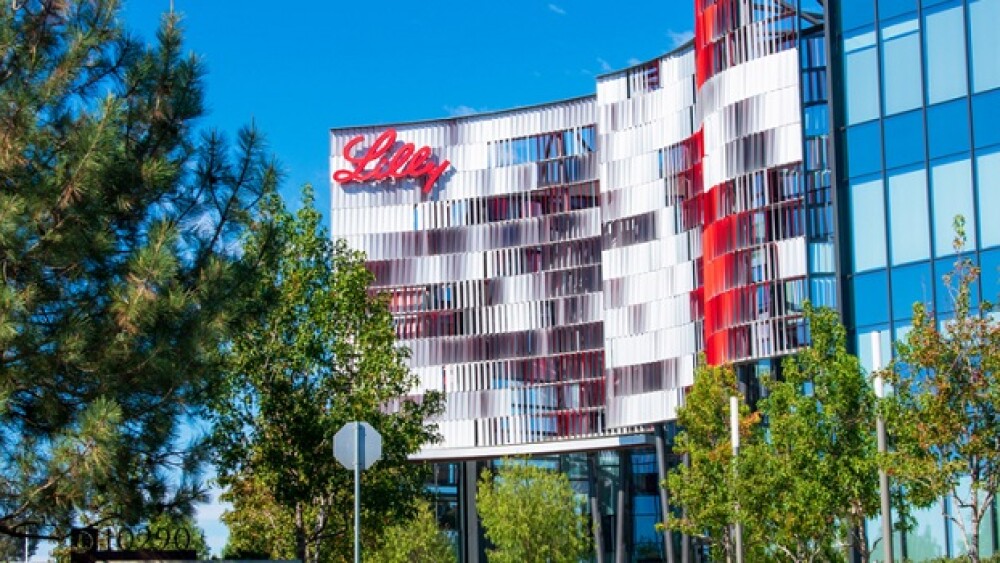Clene Nanomedicine was awarded a crucial patent from the U.S. Patent and Trademark Office for its patented clean-surfaced gold nanocrystals used for treating patients with multiple sclerosis.
Clene Nanomedicine was awarded a crucial patent from the U.S. Patent and Trademark Office for its patented clean-surfaced gold nanocrystals used for treating patients with multiple sclerosis.
The patent marks the first one the company has secured for its gold nanocrystal technology in multiple sclerosis, a neurological disease estimated to impact more than 1 million people in the United States. Clene is currently assessing its lead asset CNM-Au8 in a Phase II trial for the treatment of chronic optic neuropathy in multiple sclerosis.
CNM-Au8 is designed to catalyze bio cellular reactions, and so far the company has seen the asset live up to its promise in clinical studies. In Phase I studies, CNM-Au8 was deemed safe and in preclinical studies, the asset demonstrated both remyelination and neuroprotective effects.
Data published by Clene has shown that treatment of neuronal cultures with CNM-Au8 improves survival of neurons, protects neurite networks, decreases intracellular levels of reactive oxygen species and improves mitochondrial capacity in response to cellular stresses induced by multiple disease-relevant neurotoxins.
In an interview with BioSpace, Clene Chief Executive Officer Rob Etherington said the company is thrilled to have been awarded this patent. Because MS is one of the largest markets in neurodegenerative diseases, the patent is important to the company as it moves forward in its clinical studies.
“We have said from the beginning that what we are doing with nanotherapeutics is unique to Clene. This patent will allow us to exclude others from using a similar program for multiple sclerosis,” Etherington said.
Etherington explained that CNM-Au8 is not designed to target a specific protein, nor it is designed to block or antagonize something, like most drugs. Rather, Clene’s compound is designed to enhance the intracellular biological actions necessary to repair and reverse neuronal damage, Etherington said.
New data is expected from Clene’s REPAIR-MS Phase II study of CNM-Au8 in the second half of 2021. Prior interim results from this study showed CNM-Au8 was associated with improvements across key central nervous system (CNS) bioenergetic metabolites.
Additionally, Clene’s VISIONARY-MS Phase II study is evaluating the efficacy and safety of CNM-Au8 as a remyelinating and neuro-reparative treatment in stable relapsing MS patients with chronic visual impairment. Interim data from the VISIONARY-MS trial demonstrated notable, exposure-related median improvements in the primary endpoint. Completion of enrollment is expected by the end of 2021.
“While the only approved treatments for MS today are immunomodulators, we see an opportunity to treat MS through a completely different mechanism of action utilizing the therapeutic bioenergetic effects of catalytic gold nanocrystals, such as CNM-Au8,” Etherington said.
Clene Chief Scientific Officer Mark Mortenson said it’s important to have a strong defensive line of patents that protects state of matter claims for suspensions and solutions, as well as processes for making the materials, devices for conducting the unique electro-crystal chemistry processes, and methods of using the novel materials, such as in this instance of using clean-surfaced gold nanocrystals for treating patients with MS. The newly-awarded patent, the company’s 112th, provides protection for about a decade with the possibility for an extension, he added. The patent marks the first one in the United States for the method of treating MS with CNM-Au8.
“It gives us a nice runway,” Mortenson noted.
In addition to the multiple sclerosis study, Clene is assessing CNM-Au8 in Parkinson’s disease and Amyotrophic Lateral Sclerosis (ALS).
Not only is the company developing its gold nanocrystal compound, Clene is developing a silver and zinc asset for COVID-19. CNM-AgZn17 is Clene’s second key asset intended for broad anti-viral and anti-microbial use. A Phase II study is planned in Brazil to treat acutely symptomatic non-hospitalized patients with COVID-19.
The patent award follows closely on the heels of a merger with Tottenham Acquisition I Limited that netted the company $31.9 million to advance its research and development. The reverse merger secured Clene a spot on the Nasdaq Stock Exchange under the ticker symbol CLNN.
Etherington said the company expects to report additional business and clinical milestones. Moretenson said the company anticipates different governments across the globe to act on about 30 different patent applications in the coming months and year.
“We remain excited about the potential of their platform to improve neurological function,” Etherington said.





